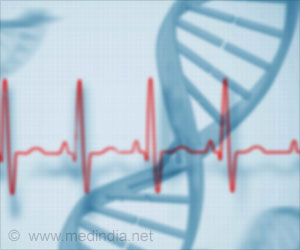
Rapid vaccine development has become crucial in an era where virus outbreaks can quickly escalate into global pandemics. The mRNA utilized in vaccines is partially produced chemically and partially synthesized via enzymes, which is a somewhat slow process, which limits the speed of vaccine manufacture.
Researchers from Nagoya University in Japan have created a novel synthesis technique that eliminates the slower enzyme reactions and produces highly pure, chemically produced mRNA. By laying the groundwork for quicker responses to viral outbreaks and new illnesses, this development might assist in preventing infections in the future at an early stage. The study was published in the journal Nucleic Acids Research (1✔ ✔Trusted Source
Development of hydrophobic tag purifying monophosphorylated RNA for chemical synthesis of capped mRNA and enzymatic synthesis of circular mRNA
).
Chemically Synthesized mRNA
The potential of mRNA technology in preventing infectious diseases has gained significant attention, particularly due to its vital role in combating the COVID-19 pandemic.
Experts believe that mRNA technology will be utilized in the future to address new diseases and genetic disorders. However, challenges related to production speed and purity pose difficulties in mRNA manufacturing.
These problems can be addressed using fully chemically synthesized mRNA. According to Masahito Inagaki: “One of the most significant advantages of fully chemically synthesized mRNA is its ability to bypass the complex and time-consuming enzymatic reactions typically required in mRNA production. A method that relies purely on chemical reactions would significantly shorten the production process.”
It also offers benefits to people that have strong immune responses to vaccines. mRNA that is derived from 5′-monophosphorylated RNA is susceptible to contamination by incomplete RNA fragments, causing a strong immune reaction.
This immune response increases the risk of side effects, particularly inflammation. However, existing purification technologies have struggled to remove these impurities, limiting its potential.
Advertisement
To address these issues, Professor Hiroshi Abe, doctoral student Mami Ototake, and Assistant Professor Inagaki devised a novel phosphorylation reagent with a nitrobenzyl group that serves as a hydrophobic purification tag.
Synthesizing Pure mRNA for Vaccine Manufacturing
Inagaki explained: “Nitrobenzyl groups have high hydrophobicity; therefore, when the nitrobenzyl group is introduced into the RNA molecule, the mRNA becomes more hydrophobic. As impure RNA lacks nitrobenzyl groups, it can be easily separated from the target RNA containing nitrobenzyl groups using reverse-phase high-performance liquid chromatography. This approach yields pure RNA, free from length inconsistencies and impurities typically associated with transcription-based synthesis methods.”
Advertisement
Besides fully synthesizing mRNA chemically, the team also created pure circular mRNA using the same method. Circular mRNAs are unique because they lack terminal structures, making them resistant to degradation by nucleic acid-degrading enzymes in the body, resulting in a longer-lasting medicinal effect.
The breakthrough in mRNA production has significant implications for the future of medical treatments. “This innovation paves the way for the highly efficient production of fully chemically synthesized mRNA and circular mRNA, which hold the potential to revolutionize RNA drug discovery and expand the scope of mRNA-based treatments,” Abe said.
Faster and purer vaccine production should improve our response times to future infectious threats. In the future, the team hopes to also use these results to develop new mRNA vaccines for cancer antigens and genetic diseases.
Reference:
- Development of hydrophobic tag purifying monophosphorylated RNA for chemical synthesis of capped mRNA and enzymatic synthesis of circular mRNA- (https:academic.oup.com/nar/advance-article/doi/10.1093/nar/gkae847/7814700)
Source-Eurekalert



